This day started with such promise. You planned the lessons, and everyone took their places, but then something, somewhere went wrong. Very wrong. And you may have no idea why. Go fix yourself a refreshing beverage, and let’s see if we can analyze what happened.
In my personal vocabulary, a “bad homeschool day” has one basic meaning: We didn’t accomplish all of the lessons that I had planned for us to do. There can be multiple causes for this “failure,” which is probably not as much of an actual failure as it is just not hitting the bull’s-eye of your intended target of Lessons Mastered. To take this analogy just a bit further, think of your day’s homeschooling plans as a standard target of concentric rings. Landing an arrow anywhere on the target is a degree of success (a partially learned lesson), and even coming close to the target is still a degree of success (learning anything at all about any topic, but not necessarily the planned lesson). A complete and utter failure would mean that your arrow never even left the bow (although that in itself teaches a lesson, but we’ll get to that later*). Also notice that the bull’s-eye of that target is not a pinpoint. It is actually roomy enough to hold several arrows, meaning that two or three arrows can be separated by some distance while still occupying the official center of the target. Consider this for a moment: you can hit the bull’s-eye several times, with the arrows landing fairly far apart from each other. Different arrows in different parts of the bull’s-eye equate to different homeschooling days that reach the goal in different ways. You can achieve success while still not reaching pinpoint perfection. (Perfection and success are two entirely different things — and success is much easier to achieve than perfection!)
Now let’s look at some possible causes of today’s Bad Homeschooling Day.
1) A Family Emergency — File this under “Life Happens.” These often cannot be avoided. Emergency Room visits are often considered by active little boys to be sure indicators of bravery and manhood, veritable rites of passage. Other emergencies can come in the guise of a chronic illness, a death in the family, or an unexpected change in career or place of residence. Marriage, divorce, pregnancy, miscarriage, and many other events can have a resounding effect on homeschooling progress and for much longer than a single day. There is usually no way to schedule an emergency: it just happens. Please do not despair when some unexpected event disrupts your calendar. Do keep in mind that extremely valuable *life lessons will still be learned during family emergencies — lessons that do not come from textbooks and cannot be experienced in classroom situations.
2) Your Students Just Didn’t Get It — File this under “Not Unusual.” Students vary in how they learn: God made them that way. What bizarre sort of Stepford Wives-world would this be if everyone reacted exactly like everyone else? The lessons for today were probably not presented in ways that corresponded to your students’ learning styles. See the Titles Index and look for Alternate Methods of Teaching [for various subjects]. Even if the exact subject you need is not listed, the articles contain many suggestions for presenting material to the various learning styles, and you will find ideas that will help.
3) Your Students Would Not Stay On Task — File this under “Learning Styles.” Over there is a daydreamer, here is a wiggler, this one is a goof-off, and that one never stops talking. Sound familiar? This category can also be applied to your students’ styles of learning, but this, too, can be accommodated. It’s not that your students are trying purposely to ignore you; it’s just that they find other facets of life much more intriguing than the way this particular lesson is being presented.
A daydreamer may be thinking up a truly valuable invention, or mulling over a tidbit from a recent conversation or book or movie or song, or puzzling over why something works the way it does, and if that does then shouldn’t this be possible, too? Your daydreamer is very likely not dreaming at all, but thinking very deep and elaborate thoughts and ideas. Allow that child to keep an “idea notebook” handy for quickly jotting down thoughts to be explored more fully later, after the lessons are done. The journal will help the child remember those thoughts, and it just might help him get refocused on the lesson at hand. Plus, you get the bonus of voluntary writing: SHH — don’t let the child know that you are secretly counting this as a writing assignment! This is just a special, personal notebook that can be kept handy during any lesson and pulled out for scribbling a quick note without receiving a scolding for momentarily not paying attention. Assure him this journal will not to be corrected, graded, or even read by anyone else until he chooses to share his ideas. My son kept a notebook that we called his Invention Journal, which he filled with complicated drawings and detailed explanations for items he felt would be valuable, time-saving, or just plain fun.
A wiggler has a serious need to move, so use it to your advantage. Send him off to run an errand to the other end of the house or to run laps around the back yard before you begin presenting the lesson. Once his muscles are awake, he will be a much more attentive listener. Include stretch breaks between lessons or between sections of a long lesson. Hindering this child’s need for movement is equivalent to letting his brain run out of gas.
Talkers have just as great a need to express themselves as the wiggler has a need to move. These are the students who can easily be engaged in discussions, debates, and question-and-answer sessions about lesson concepts. They are not likely to read directions themselves: they are much more likely to ask you to tell them what to do. [See Teach Your Students to Teach Themselves for help with this.] A budding comedian needs to get the funny story out of his system before he will be able to concentrate on any academic input, so invite him to tell it, and enjoy a hearty laugh together. He will be much more attentive to your lessons when he knows you appreciate his humor. You can trust me on this one — by the time my son turned six, I had developed a great empathy for what Jerry Seinfeld’s mother must have endured.
A student who cannot keep his hands still is often accused of goofing off and delaying his work by fiddling with anything within reach. This one will drive you straight to the room with the thickly padded rubber wallpaper unless you realize that those busy fingers are the keys to his ears. Just like the wiggler who must move his legs to activate his brain, The Busy Fingers Kid must have something in his hands to stimulate his brain. Once again, you can use this to your advantage: let him hold a favorite toy or keep his special blanket folded underneath him on his chair or give him modeling clay to work with while you read aloud or explain a lesson concept. Do not insist on eye contact with this child to prove he is paying attention — his ears will only be able to listen to you if his hands are busy, and his eyes may or may not focus on you. This child will respond especially well to manipulatives, learning aids, and educational gadgets. It’s not that he wants something to play with, he just needs to feel something with his fingers to be able to learn.
4) A Defiant Student — File this under “Needs a Little More Time.” This most often occurs when a family is involved in a major change, such as the transition from public or private school to homeschooling, especially if the student is not completely thrilled with the idea. Students who have previously been in a classroom situation need time to decompress and shift gears into the more relaxed atmosphere of homeschooling. A good rule of thumb for the length of the transition is one month for every year the child spent in school, double that if the child went to preschool. That period will be a time of adjustment: expect to find and repair potholes, expect to share tears and triumphs, and be as patient, loving, and forgiving as you possibly can muster. Know that every rough patch you can bring your student through will lead to smoother sailing later on. Remember that this child’s entire academic world is undergoing dramatic changes, and your student has no idea what to expect next. Treat your defiant student with respect, and he will respect you in return. [See Troublesome Students for more specific suggestions.]
5) Using a Homeschooling Style That Is Counter to Your Family’s Lifestyle — File this under “Common Mistakes.” Many families who are new to homeschooling, especially families who are leaving public or private school, make the all-too-common-but-well-intended mistake of trying to duplicate a formal school routine at home. Reasoning that the children have been used to precisely timed periods, clocks and bells to signal those periods, structured lessons, and periodic tests, innocent first-time homeschoolers may think it is wrong to finish a subject in less than 30 minutes (or to extend it longer than 60 minutes), wrong to start the day’s lessons after 10 AM (or before 8 AM), or wrong to finish all of the day’s lessons in only 2 hours (or wrong not to have everything finished up by 3:15 PM). Let me assure you that you may use as much or as little time as seems fitting to your students’ abilities, and daily variances are not at all uncommon. Furthermore, it is absolutely permissible to take stretch breaks and play breaks and snack breaks as often as they may be necessary. You are allowed to teach students of close but differing ages as though they were in the same grade at the same time, if that fits well into your situation and their needs. You are allowed to skip a lesson now and then, spread a single lesson over several days, take a day off when you really need it, and choose educational materials that match your family’s values and interests.
If your students need structure and precise scheduling, then by all means use it. But if your family feels stifled and pressured by demanding schedules and tedious lessons, explore learning in a more relaxed, more motivating environment. Perhaps your plans have been too aggressive. Perhaps you do need more personal discipline. Whatever your family’s needs may be, find the combination of lesson materials and supplemental activities that works for your family and begin to thrive.
I cannot promise that you will never again have a Bad Homeschooling Day. I cannot promise that every Bad Homeschooling Day can be magically transformed into an Exceptional Learning Day. What I can guarantee is that you will get out of homeschooling exactly what you will put into it: if you work toward teaching your students in the ways they learn best, you will reap attentive, eager learners who may often be several steps ahead of you. When a student’s interest veers away from the planned lesson, do not be afraid to pursue his suggestion — you may both end up learning much more than the textbook’s authors intended.
The poet Robert Burns is often paraphrased, The best laid plans of mice and men often go awry. Proverbs 16:9 provides a more optimistic conclusion: The mind of man plans his way, but the Lord directs his steps. No matter what your plans may be, remember that they are only plans: ideas and intentions of what you hope to accomplish with your students during a set period of time. Some days are slow learning days — you know yourself that on some days you can think faster or more clearly than you can on other days, depending on the weather, a mild illness, or the unpredictable distractions of life. Your children are exactly the same: some days their progress will be slow, and on other days they will make up for lost time and amaze your socks off! Give yourselves time to adapt to learning at home, and experiment with schedule changes until you find the ideal solution for your family’s needs. Use Life’s interruptions to teach the lessons not found in books, and recognize the lessons your students are learning, whether or not the worksheets get completed today.
For further encouragement, please see these additional articles:
Redeeming a Disaster Day
Homeschooling Is a Choice
What Is Your “Best”?
Reschedule, Refocus, Regroup

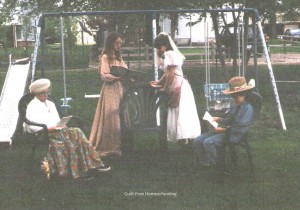
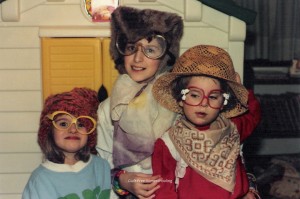

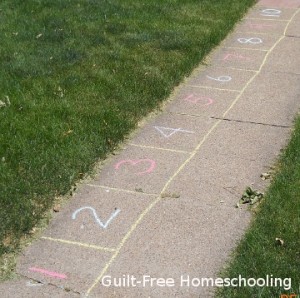

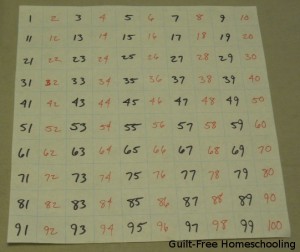

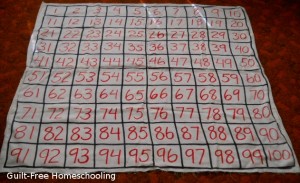

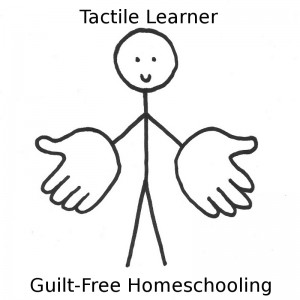
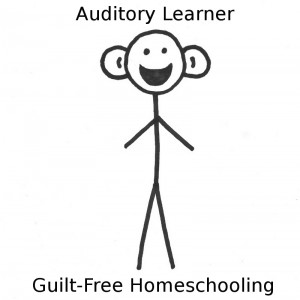


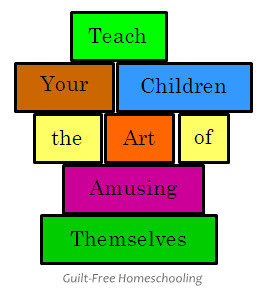


 Guilt-Free Homeschooling is the creation of Carolyn Morrison and her daughter, Jennifer Leonhard. After serious disappointments with public school, Carolyn spent the next 11 years homeschooling her two children, from elementary to high school graduation and college admission. Refusing to force new homeschooling families to re-invent the wheel, Carolyn and Jennifer now share their encouragement, support, tips, and tricks, filling their blog with "all the answers we were looking for as a new-to-homeschooling family" and making this website a valuable resource for parents, not just a daily journal. Guilt-Free Homeschooling -- Equipping Parents for Homeschooling Success!
Guilt-Free Homeschooling is the creation of Carolyn Morrison and her daughter, Jennifer Leonhard. After serious disappointments with public school, Carolyn spent the next 11 years homeschooling her two children, from elementary to high school graduation and college admission. Refusing to force new homeschooling families to re-invent the wheel, Carolyn and Jennifer now share their encouragement, support, tips, and tricks, filling their blog with "all the answers we were looking for as a new-to-homeschooling family" and making this website a valuable resource for parents, not just a daily journal. Guilt-Free Homeschooling -- Equipping Parents for Homeschooling Success!

Recent Comments